Cold temperatures and harsh weather conditions are bad news for most animals, including spiders. But these creatures aren’t entirely helpless when faced with frigid temperatures. They have a few tricks up their spinnerets to help them survive the winter.
Naturally, spiders are cold-blooded creatures, so they rarely run to your home in search of warmth like other pets during winter. However, during this season, spiders’ bodies produce glycol compounds that function like the antifreeze substance you put in your car engine to protect it during winter. These compounds protect the spider’s tissues from freezing even when exposed to low temperatures.
The spider also enters the diapause phase during cold seasons. This phase is different from hibernation, as seen in the table below:
| Diapause | Hibernation |
|---|---|
| It can occur any time of the year | Mainly occurs in the winter seasons |
| Occurs in insects | Observed in larger animals and invertebrates like arthropods |
| A temporary dormancy | Reduction of metabolic activities |
In the diapause phase, the spider will experience:
- Inadequate food supply
- Changes in the length of daylight
- Reduced temperatures
As a result, they become sluggish and seek shelter in leaves, under rocks, and in cracks of barks. You may also find some spiders in the subnivean zone (the top layer of the soil or snow). The zones protect them from the cold through insulation, giving them the freedom to move around.
How Do Spiders Survive Winter?
As seen above, spiders produce antifreeze compounds in their bloodstream to protect them from the cold winter. They also have many other different ways to cope with the winter months. Let’s discuss them below:
Building Nests
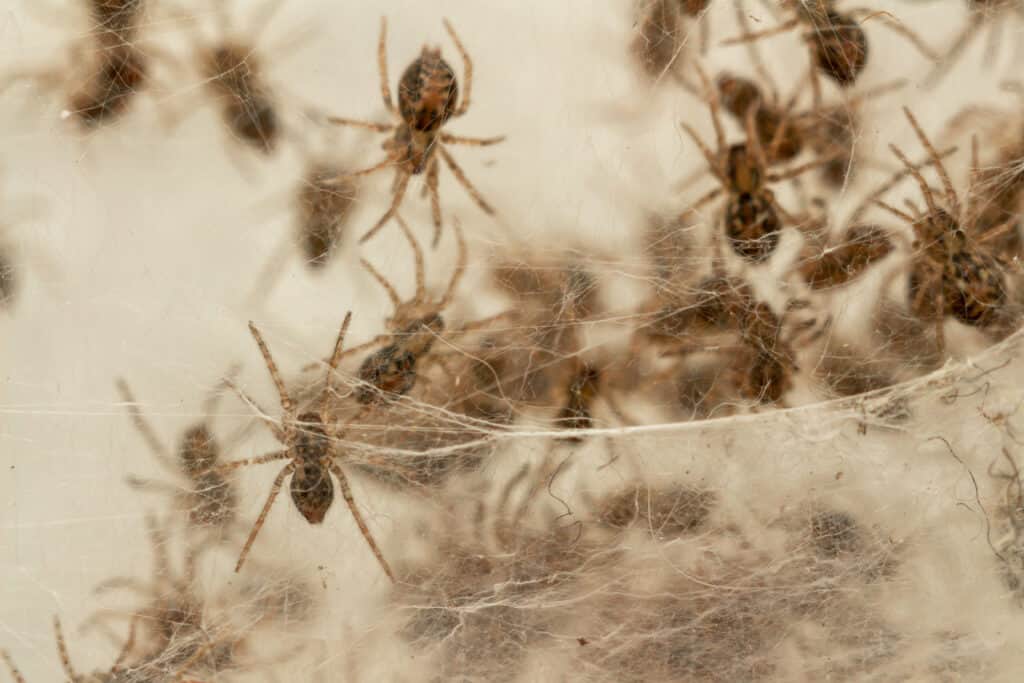
When temperatures drop, many female spiders start selecting safe places to lay their eggs.
©Ivan Semenovych/Shutterstock.com
Spiders are beautiful creatures. Most species will mate and lay eggs before the snow falls. However, frigid temperatures don’t favor their eggs, so those who wish to preserve their eggs must think creatively. When temperatures drop, many female spiders start selecting safe places to lay their eggs.
To keep their eggs warm and alive until spring, spiders may choose hidden and dark places, like:
- Burrows
- Chimneys
- Downspouts
Alternatively, other species may opt to build a nest-like web where they will lay their eggs. You’ll see most of these webs in sheltered surroundings.
For example, spiders may place a web on exposed corners or cracks to protect their offspring. Surprisingly, most of these spiders that build webs for their young ones die after finishing. When the offspring are warm enough to survive, they will leave the nest.
Laying Eggs in Egg Sacs

The silk used to make the egg sac also keeps it warm.
©Chloe Langton/Shutterstock.com
Spiders lay their eggs in egg sacs that protect them from extreme weather conditions. The silk used to make the egg sac also keeps it warm. The spiderlings will hatch from the eggs when spring comes around, and if there is enough food for them to eat, they will grow into adults by summertime.
Winter Spider Species in Your Home
There are many different types of spiders, but only a few are harmful to humans. So if you find a spider in your home, it’s not necessarily a sign of an infestation. It could just be an individual that entered through an open door or window.
Although spiders are often viewed as pests, some of them are beneficial. Spiders eat insects and other arthropods that are harmful to humans and animals. They can also help reduce the population of pest insects in your home.
Here are some common types of spiders that you may find in your home during winter:
The American House Spider
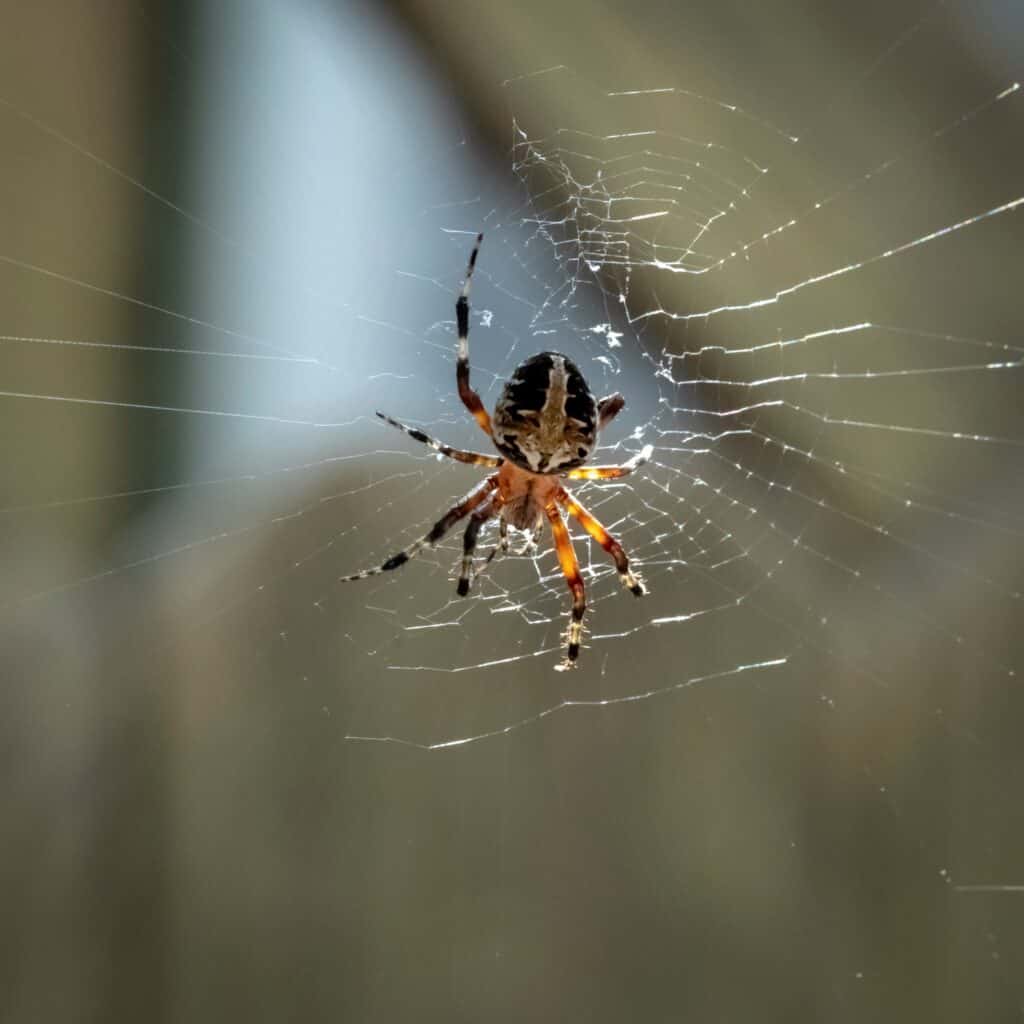
American house spiders prefer to live near human habitations, where they can find plenty of insects.
©Constantine Lukashin/Shutterstock.com
The American house spider is one of the most common in homes. It is a giant, long-legged spider with a greyish body and pale-white markings.
American house spiders prefer to live near human habitations, where they can find plenty of insects. They are commonly found in dark, moist areas like:
- Basements
- Crawl spaces
- Garages
- Sheds
They are not dangerous, but their bites can cause mild reactions in some people.
The female builds a silken sac she carries around when she moves from one place to another. The sac contains hundreds of eggs and a food supply for the young when they hatch. This species does not build webs like other spiders because it hunts its prey instead of waiting for it to come by.
The Brown Recluse
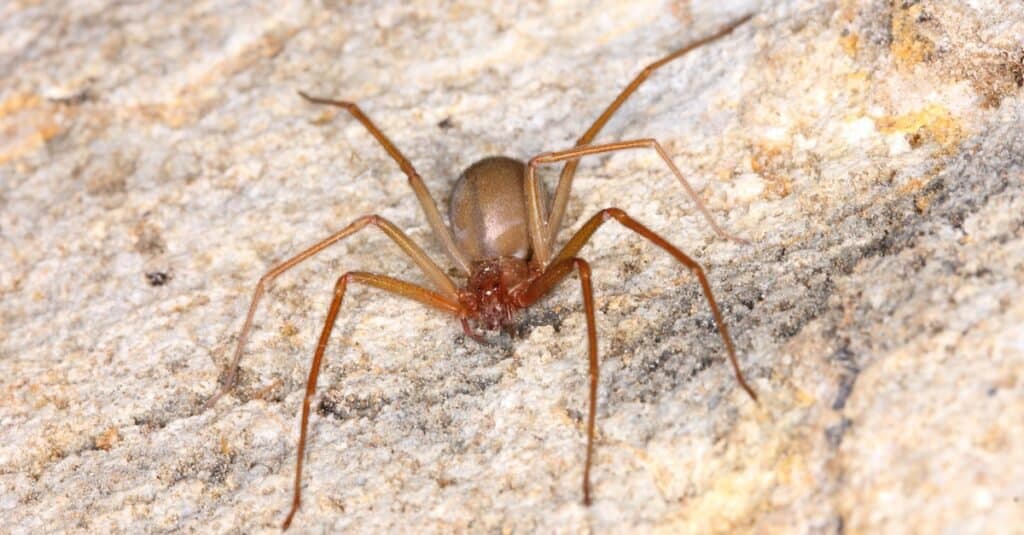
The brown recluse is not known to be aggressive and won’t bite unless threatened or provoked.
©Pong Wira/Shutterstock.com
The brown recluse spiders are tan to dark brown and have a violin-shaped markings on their backs. They are about an inch long with six eyes (three on each side). They prefer to make their webs in dark, dry places such as:
- Behind furniture
- Under boxes or bags
- Cellars
- Sheds
- Basements
- Undisturbed corners of your home
The brown recluse is not known to be aggressive and won’t bite unless threatened or provoked. When these species bite, they leave a small bite mark that may be surrounded by redness and swelling.
The bite can cause severe damage if left untreated. So if you think you’ve been bitten, see a doctor immediately. If you can capture the spider that bit you, bring it with you so they can identify it correctly and treat it accordingly.
The Hobo Spider
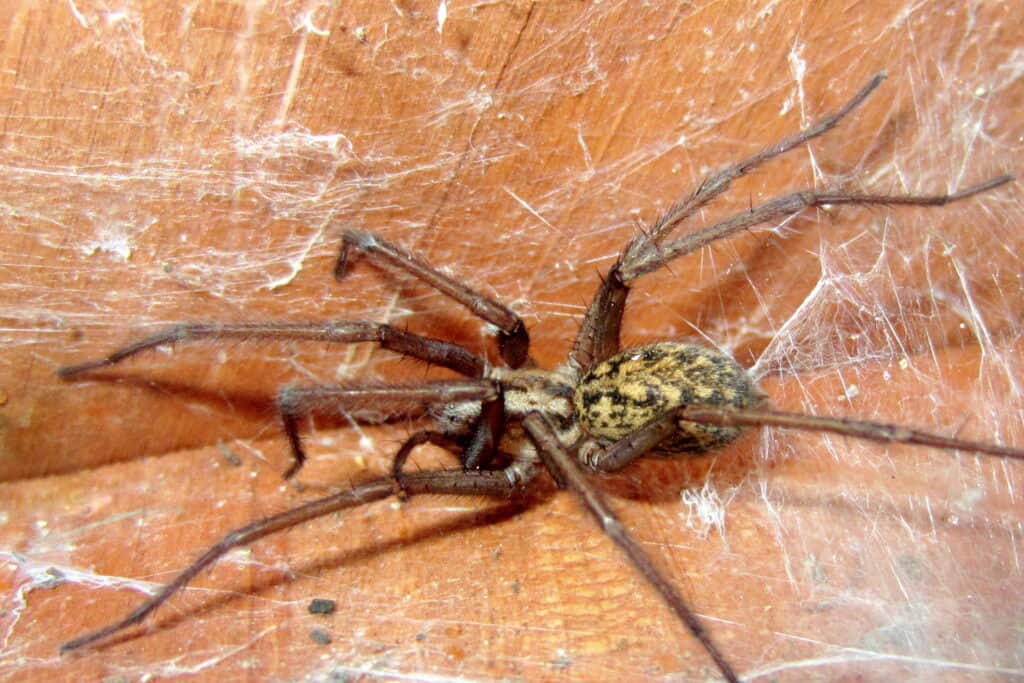
The hobo spider’s diet consists of insects and other smaller spiders.
©Randy Bjorklund/Shutterstock.com
The hobo spider is a brown spider often confused with the brown recluse. The hobo spider is not dangerous to humans, but its bite can cause pain, redness, and swelling.
The hobo spider prefers areas with access to apertures, such as behind furniture or in boxes. However, they may also be found under outdoor objects such as rocks or logs.
The hobo spider’s diet consists of insects and other smaller spiders. They do not spin webs but rather hunt for food throughout the day. The hobo spider prefers dark areas and lays eggs in a silk sac hanging from branches or other objects above ground level.
The Jumping Spider

Jumping spiders are active at night and spend much time hunting for other insects or small mammals on flowers.
©iStock.com/Thien Woei Jiing
The jumping spider is a common spider found in gardens and homes. They are called jumping spiders because they have huge eyes that face forward and a remarkably keen ability to judge distances. They can leap up to 50 times their body length.
Jumping spiders are active at night and spend much time hunting for other insects or small mammals on flowers. They sometimes enter houses in search of prey but are not dangerous to humans unless they are accidentally handled.
The most common place to find jumping spiders is on the outside walls of your house, especially near the corners where the sun hits. The females leave silk trails as they travel around your home, so you may notice them on window panes or other surfaces that get lots of sun exposure during the day.
The Wolf Spider
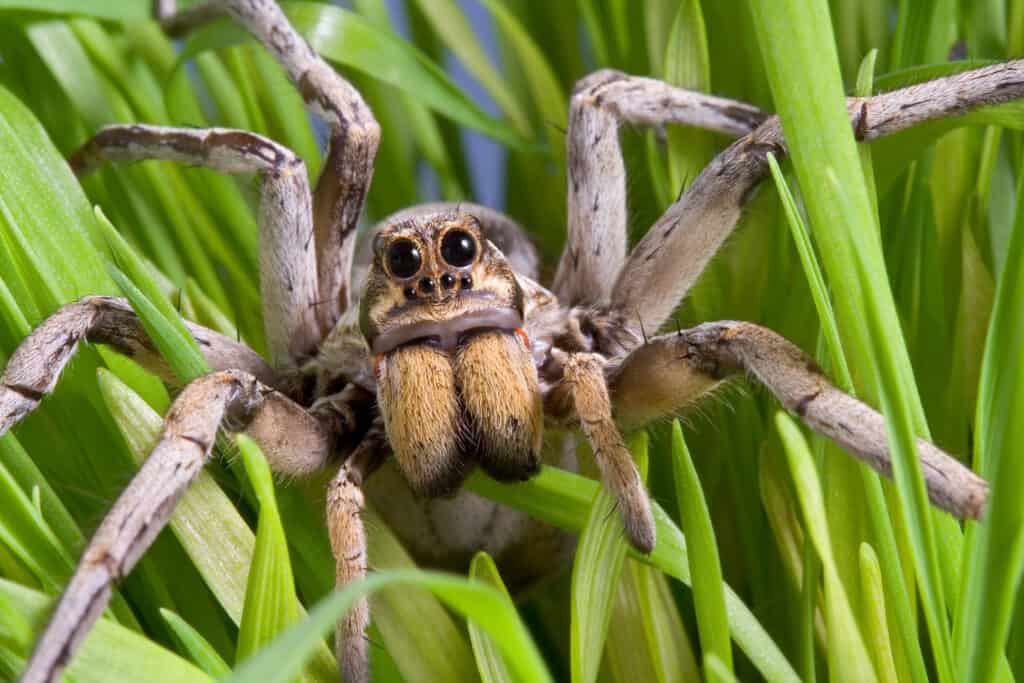
Wolf spiders make their homes in the ground or under rocks, debris, or logs.
©iStock.com/CathyKeifer
Wolf spiders are giant and hairy with round bodies and long legs. They vary in color from gray to brownish-red and have dark stripes.
They’re often mistaken for tarantulas because of their large size and hairiness. Wolf spiders are beneficial to humans because they feed on other insects such as:
- Flies
- Mosquitoes
- Crickets
- Other spiders
Wolf spiders make their homes in the ground or under rocks, debris, or logs. They build small burrows with several entrances that they use as hiding places during the day and as nesting sites at night.
Wolf spiders sometimes wander into houses during summer to escape high temperatures. These spiders seldom bite people unless they are handled or stepped on by bare feet while sleeping.
The Black Widow
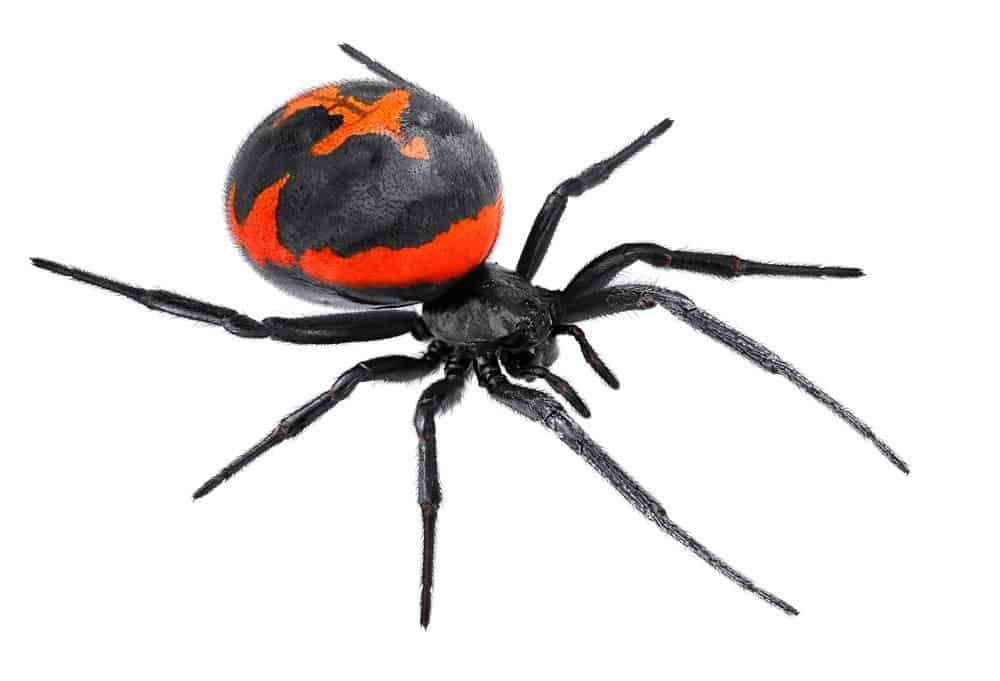
The
black widow spider
‘s bite is excruciating but rarely fatal to humans.
©Protasov AN/Shutterstock.com
The black widow spider is one of the most venomous spiders. It is a giant, shiny black spider with a red hourglass shape on its underside.
These spiders make their webs in dark, protected areas, such as garages, sheds, or barns.
This spider’s bite is excruciating but rarely fatal to humans. The venom acts slowly by destroying muscle tissue and causing muscle spasms. The effects include:
- Severe pain at the bite site
- Nausea
- Vomiting
In some cases, victims may experience abdominal cramps, low blood pressure, and respiratory failure leading to death within 24 hours.
To avoid being bitten by a black widow spider:
- Avoid dark places like woodpiles or piles of leaves where these spiders might hide during the day.
- Don’t sleep with your window open if holes in screens might let these spiders get inside your home.
- Wear gloves if you have to handle firewood or other items that these spiders might have used as shelter sites for their eggs and young spiders (spiderlings).
How Do You Deal With Spiders in Your Home?
Spiders are common in homes, and you can find them in every room, including the bedroom, bathroom, kitchen, and living room. There are many types of spiders, but only a few of them can cause severe problems for humans.
There are many ways to get rid of spiders in your home. Here are some of them:
Use Natural Oils and Vinegar
There are various kinds of natural oils and vinegar that you can use to keep spiders away from your home. These include peppermint oil, cedar oil, cloves, cinnamon bark oil, and lemon juice.
You can also mix several of these for a more substantial effect or use one on its own, depending on how strong you want your solution to be.
Seal the Cracks in Your Home
Spiders find their way into your homes through cracks and crevices around windows and doors. Since they can be pretty small and hard to spot, seal these areas as soon as possible. You can use caulking materials or silicone sealants. Once you have closed all the cracks in your house’s exterior surface, there won’t be any other way for these pests to get inside your home.
Use Store-Bought Insecticide
Store-bought insecticides are effective against most spiders. You can find these products at any hardware, grocery store or online. There are many types on the market, including sprays, powders, and dust. Some of these products kill on contact, while others take longer to work. Read the label carefully before using any product.
Keep a Tidy Home
Spiders tend to like clutter and other things that provide hiding spots. So if your house is messy and cluttered, it’s more likely that spiders will hang around your home. Try keeping things organized, o there aren’t as many places for spiders to hide.
How Long Do Spiders Live?
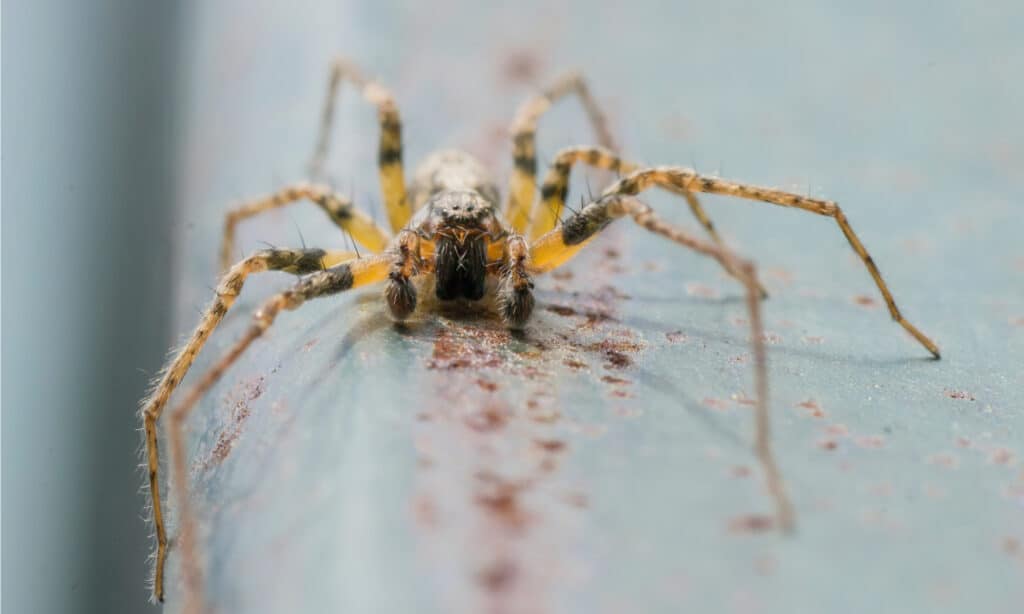
While the average lifespan of a spider is 1 year, the funnel barn weaver can live up to 7 years.
©Korovko Gleb/Shutterstock.com
While spiders have multiple creative ways to survive the winter, their lifespans are fairly short. The average lifespan of a spider is one year, but it can vary by species. A black widow spider can live up to 3 years, a brown recluse up to 2, while a barn funnel weaver can live as long as 7 years. Some spiders live up to 30 years, but the longest-living ones are typically tarantulas. As in many other animal species, female spiders tend to outlive their male counterparts.
Bottom Line
Spiders are cold-blooded animals, meaning they cannot maintain a body temperature above their surroundings. To compensate for this disadvantage, they spend winter in a state of diapause called torpor to avoid the cold and conserve energy.
While some spider species will go below ground for this purpose, others choose to go up into the higher branches of trees. Only baby spiders will stay in their nests during the winter—mature spiders must leave to find food and a new place to overwinter. These tiny arachnids may be small, but they genuinely are mighty survivors.
Bonus: Why Do I Have So Many Tiny Spiders in my House?
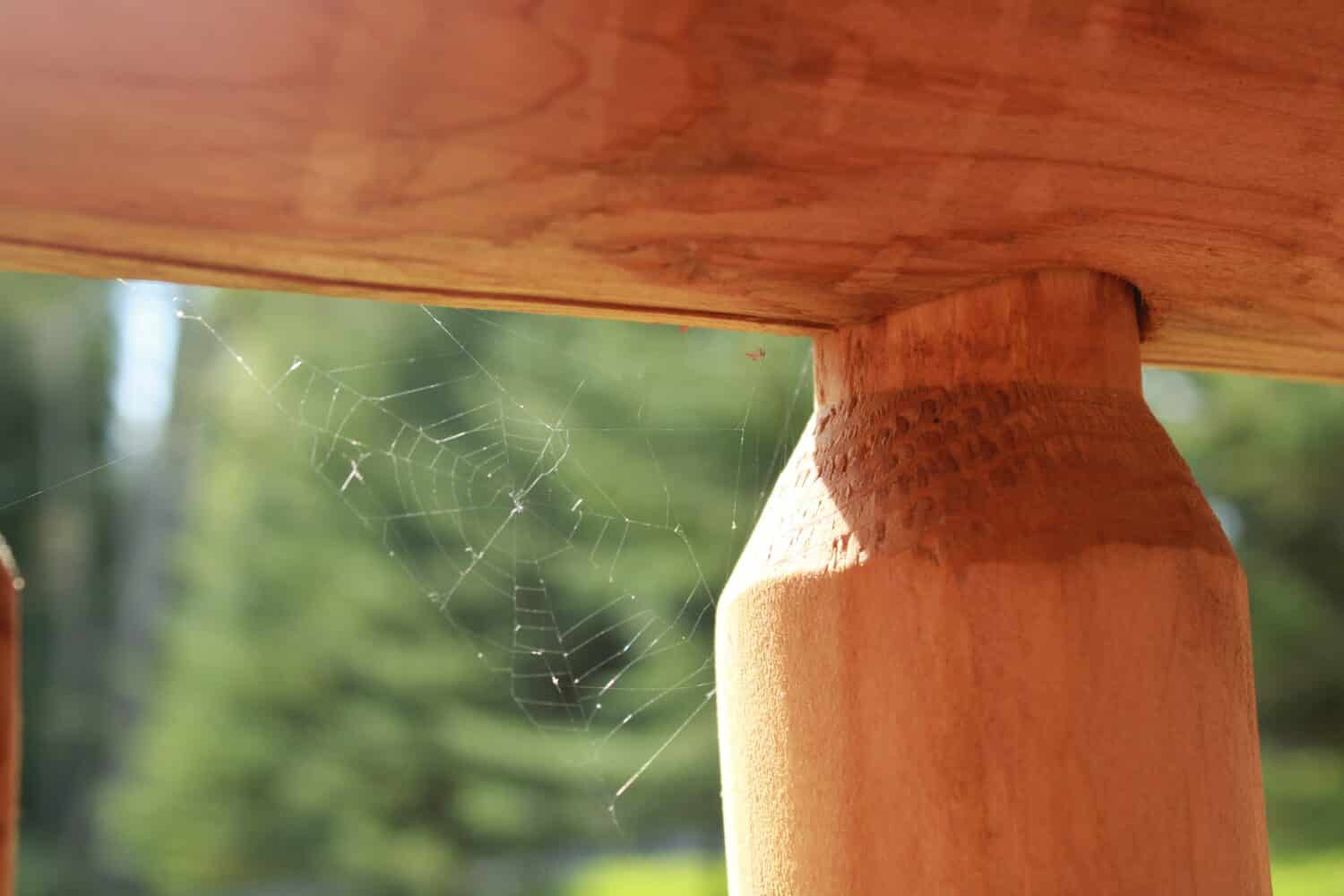
Tiny spider webs inside your house don’t always indicate infestation.
Image: BriiNotti, Shutterstock
©BriiNotti/Shutterstock.com
If you live in a wooded area you may have noticed a number of tiny spider webs housing tiny spiders. It seems like every time you get rid of them – another comes back. Where are they coming from? What in the world do they eat in a clean house with no other pests?
Sometimes spiders run into your house through an open door – or through gaps in a window – but if you see a number of tiny spiders in your house it is likely that an adult female spider previously laid eggs in a hidden corner of your home and those eggs have recently hatched. Some spiders are born indoors and live their short lives there – most of these spiders won’t survive for very long and are a temporary nuisance. Those few that do thrive indoors are probably living on tiny mites that live on house plants.
If you see several tiny spiders together – that indicates that they have just hatched – adult spiders don’t spend time together. Look for the egg sack so you can dispose of it and all of the spiders that are hanging around it. If you don’t see them together and just notice tiny webs here and there – don’t worry. You don’t have an infestation. Maybe these little spiders can provide your plants with some natural mite relief!
The photo featured at the top of this post is © lighTTrace Studio/Shutterstock.com
FAQs (Frequently Asked Questions)
Are all spiders venomous?
No. Only a tiny percentage of the world’s spider species have venom glands and fangs that can inject venom into their prey or predators. These are called “symbolized” or “true” (venomous) spiders. Other species may produce milder toxins that act as irritants or paralyzing agents but not as severe venoms as true spiders do.
Do all spiders spin webs?
No. Some build silk retreats or caves, while others use silk to wrap prey or line egg sacs. But all spiders produce silk at some point in their lives, except male nursery web spiders, which live as adults without ever spinning silk.
What do you usually find in a spider web?
Spiders use webs to catch insects as food. Webs can be found in many different places, including ground level on trees and bushes, on the sides of buildings or over doorways, or high up on buildings or trees.
Thank you for reading! Have some feedback for us? Contact the AZ Animals editorial team.







